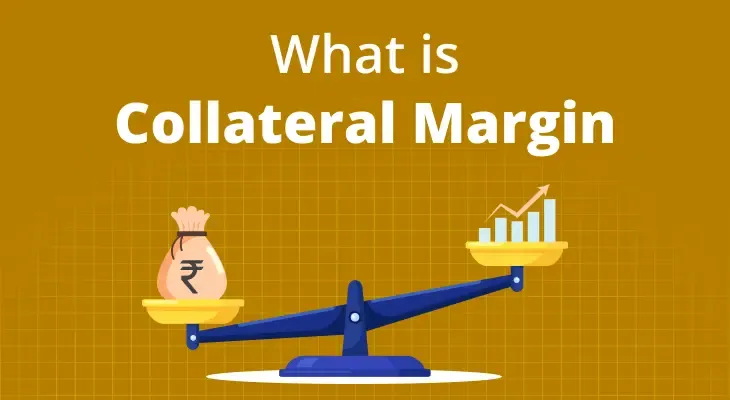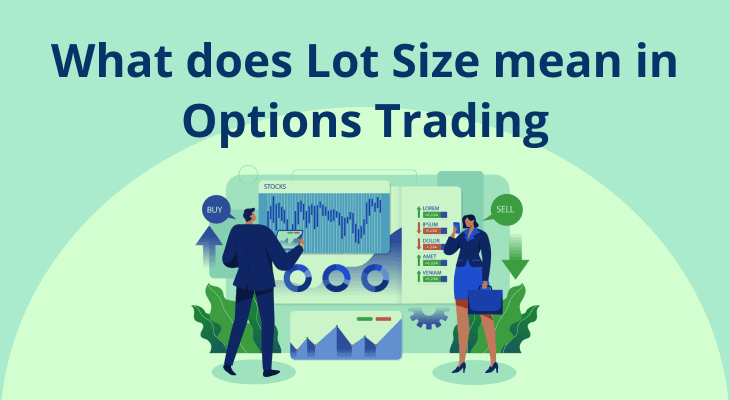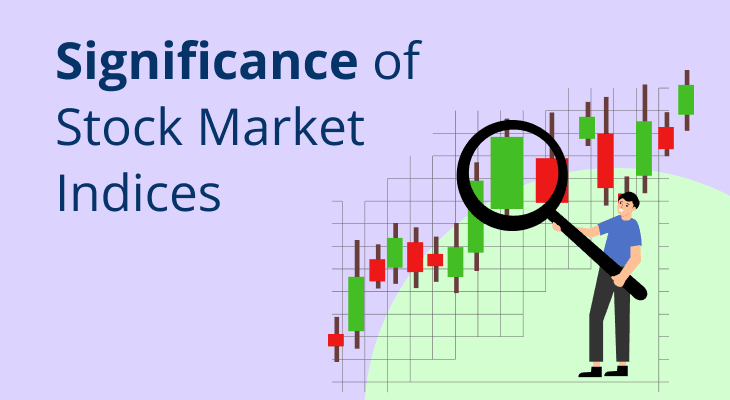
What is Collateral Margin?
Navigating the world of finance can be daunting, especially when it comes to borrowing and investing. If you've ever dealt with investments, stocks, or trading, you might have come across the term "collateral margin". Terms like "margin," "collateral," and "leverage" can become tangled in a web of complexity. Yet, understanding these concepts is vital to making informed decisions that align with your financial goals. At its essence, collateral margin offers a bridge that connects the world of investment and credit, empowering you to optimise your financial strategies and elevate your financial standing.
In this blog, we'll delve into the meaning of collateral margin, explore its applications against shares, and shed light on how it can benefit investors and borrowers alike.
What is Collateral Margin?
Collateral margin, also known as margin against shares, refers to the practice of using your securities or financial assets as collateral to secure a loan or credit. When you want to borrow money from a financial institution, you can offer your stocks, bonds, or other investment assets as security. In doing so, you create a buffer or margin between the value of the loan and the value of the collateral, which acts as protection for the lender in case you default on the loan.
The Significance of Collateral Margin
Here's why it's essential:
Access To Credit
For investors or traders, collateral margin opens up opportunities to access credit that they might not have been eligible for otherwise. Instead of relying solely on their creditworthiness, they can use their investment assets to secure loans, enabling them to seize promising investment opportunities, expand their portfolio, or meet urgent financial needs.
Lower Borrowing Costs
Collateralised loans, including those secured through collateral margin against shares, often come with lower interest rates compared to unsecured loans. Lenders see the pledged assets as a layer of protection against default, thus offering more favourable borrowing terms.
Leveraged Trading
Collateral margin also enables leveraged trading, where investors can increase the potential returns on their investments. By borrowing against their securities, they can amplify their trading positions, thus potentially magnifying gains (and losses) during market fluctuations.
Benefits of Collateral Margin:
Collateral margin offers several advantages for both borrowers and lenders, making it a sought-after financial tool. Let's explore its benefits:
Flexibility
Collateral margin allows borrowers to use various investment assets as collateral, including stocks, bonds, mutual funds, and more. This flexibility provides individuals with a wide range of choices and ensures they can use the most suitable assets as per their needs and risk tolerance.
Quick Access To Funds
Compared to traditional loans, obtaining collateral margin is often a faster process. Since the loan is secured by assets, there's less need for extensive credit checks, and the evaluation is primarily focused on the value and liquidity of the collateral.
Diversification Without Liquidation
Investors can keep their investment positions intact while using them as collateral for a loan. This means they can maintain their diversified portfolio without the need to sell assets to raise funds.
Risk Management
Collateral margin acts as a risk management tool for lenders. In the event of default, they can liquidate the collateral to recover their funds, reducing the overall risk associated with lending.
Acquiring Collateral Margin: A Step-by-Step Guide
Acquiring collateral margin against shares follows a well-defined process, which may vary slightly depending on the financial institution. Here's a general outline:
Eligibility Assessment
The lender will assess your eligibility for collateral margin, taking into account factors such as the type and value of the shares, your creditworthiness, and the overall market conditions.
Loan Amount Evaluation
Based on the value of the pledged shares and the lender's loan-to-value ratio, the maximum loan amount you can obtain will be determined.
Pledge Agreement Execution
Once the loan terms are agreed upon, you'll sign a pledge agreement, officially pledging your shares as collateral for the loan.
Funds Disbursement
Upon successful execution of the pledge agreement, the lender will disburse the approved loan amount to your designated account.
Collateral Margin vs. Margin Pledge: How Do They Differ?
Although collateral margin and margin pledge might seem similar, they have some key differences:
Collateral Margin
It involves using investment assets as collateral to secure a loan or credit.
Borrowers can utilise the loan amount for various purposes, such as investment, business expansion, or personal needs.
The borrower retains ownership and rights to the collateral during the loan term.
Margin Pledge
Refers to pledging securities to meet margin requirements for trading in the stock market.
The pledge is specifically for meeting margin obligations related to stock trading.
The borrower temporarily transfers ownership and rights of the pledged securities to the lender until the margin requirements are met.
Is Collateral Margin a Secure Option?
The safety of collateral margin depends on several crucial factors that both borrowers and lenders should carefully consider. While collateral margin can provide significant advantages, it also comes with inherent risks that require thoughtful management.
For borrowers, understanding the risks involved is paramount. Taking on a collateral margin loan means putting your investment assets at stake. If the market experiences a downturn and the value of your collateral decreases, you could face a "margin call " – a situation where the lender demands additional collateral to maintain the required margin level. Failure to meet this call could lead to the forced sale of your assets at unfavourable prices, resulting in substantial losses.
To mitigate such risks, borrowers must have a well-defined repayment plan and assess their ability to service the loan. Evaluating the stability of the investment assets and considering potential market fluctuations is crucial when using collateral margins for leveraged trading.
For lenders, the safety of collateral margin hinges on prudent risk management practices.
Conducting thorough due diligence on the borrower's creditworthiness and financial standing is vital. Setting an appropriate collateral margin based on the type and liquidity of the assets being used as security can reduce exposure to potential losses.
Furthermore, diversifying the collateral pool can enhance the lender's safety. By accepting a mix of various assets, lenders can spread the risk across different market sectors, reducing the impact of a decline in any single asset's value. Regular monitoring of the market conditions and maintaining open communication with borrowers are also essential risk management practices for lenders. Being attentive to changes in the borrower's financial situation and promptly addressing any concerns can help prevent potential default situations.
Collateral margin can be a safe financial instrument when used responsibly by both borrowers and lenders. Careful consideration of the risks involved, coupled with thoughtful risk management practices, can ensure that collateral margin serves as an effective tool for accessing credit and managing investment opportunities while safeguarding the interests of all parties involved.
Conclusion
Collateral margin is a powerful financial tool that allows individuals to leverage their investment assets to access credit, seize opportunities, and manage risk. Its importance lies in providing investors with greater financial flexibility and favourable borrowing terms, while also offering lenders security in case of default. However, like any financial arrangement, it comes with risks, and responsible use and understanding of collateral margin are essential. By grasping its benefits and adhering to prudent financial management, individuals can make the most of collateral margin and potentially enhance their financial positions in the market.
FAQ
Can I pledge any investment as collateral for margin?
Yes, most financial institutions accept a wide range of marketable securities, including stocks , bonds, mutual funds , and certain types of government securities, as collateral for margin.
Can I continue to earn dividends and interest on my pledged securities?
In most cases, you will still be entitled to receive dividends and interest on your pledged securities even after they are held as collateral. However, some lenders may require you to reinvest these earnings to reduce the loan balance.
Can I use collateral margin for short-term trading purposes?
While the collateral margin is commonly used for long-term investments and financial needs, it is not typically suitable for short-term trading due to potential fluctuations in the value of the pledged securities. Short-term traders usually opt for margin pledge in the context of the stock market.


